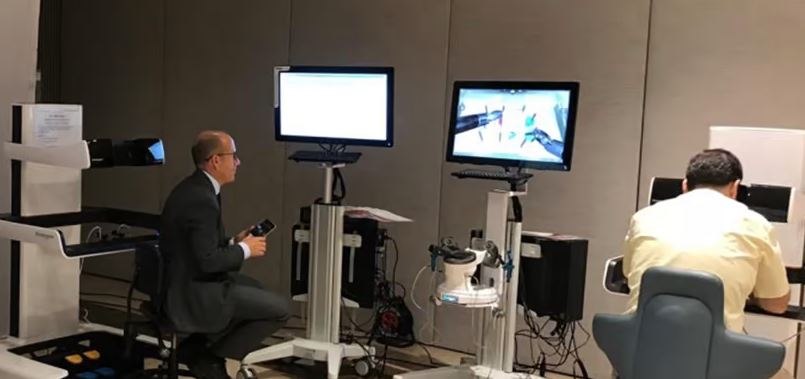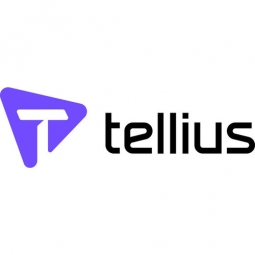Customer Company Size
Large Corporate
Region
- America
Country
- Canada
Product
- Tellius
Tech Stack
- Augmented Analytics
- In-memory Data Processing
- Search-driven Analytics
Implementation Scale
- Enterprise-wide Deployment
Impact Metrics
- Customer Satisfaction
- Digital Expertise
- Productivity Improvements
Technology Category
- Analytics & Modeling - Predictive Analytics
- Analytics & Modeling - Real Time Analytics
- Analytics & Modeling - Data-as-a-Service
Applicable Industries
- Education
Applicable Functions
- Business Operation
Services
- Software Design & Engineering Services
- System Integration
About The Customer
Seneca College of Applied Arts and Technology is one of the largest colleges in Canada, with 10 campuses across the greater Toronto area. It serves 26,500 full-time and 70,000 part-time students. The college is committed to improving student success by leveraging data to understand the evolution of students from application to graduation and beyond. Cristian Durca, the Director of Information Solutions, manages all of Seneca’s software applications, including campus solutions, learning management systems, and internal finance and HR applications. The college aims to enhance the effectiveness of its business groups and deliver ad hoc reporting to the executive level by improving access to data and obtaining faster insights from all systems.
The Challenge
Seneca College faced significant challenges with their existing BI reporting system, which was tied to their ERP implementation. The system had canned reports that were not relevant to their business needs, making it difficult to customize content. Creating and publishing a single report to production took days, which was inefficient. Additionally, executives frequently had ad hoc requests for information that required a fast way to analyze many data elements and explore different metrics on the spot. Each department had specific requirements for performance metrics, necessitating a flexible way to visualize data. Furthermore, data was located in multiple source systems, including their ERP, learning management system, cloud, and custom applications. Without a centralized data warehouse, their next analytics system needed to connect to all their data sources.
The Solution
Seneca College chose Tellius as their analytics platform for several reasons. The platform's augmented analytics capabilities allowed Cristian’s team to automatically discover insights from data that the system was not trained on. This feature enabled business users to get answers quickly without needing assistance from IT. The Tellius architecture provided fast performance with in-memory data processing, allowing the college to connect and integrate data from multiple sources. It also offered scalability beyond their target of hundreds of gigabytes of data. The platform was user-friendly, making it easy for Cristian’s team to build presentations with data visualizations quickly and with minimal training. Executives and department heads could interact with the data and get answers to their questions independently. Automated key driver analysis was crucial in optimizing the student admission process, revealing which parts of the process were lagging and which students were most likely to enroll. The findings were confirmed by the business, marking a win for the team. As Seneca continues to bring more data from disparate sources into their analysis, augmented analytics will help them identify patterns and anomalies across the student journey, improving the student experience.
Operational Impact

Case Study missing?
Start adding your own!
Register with your work email and create a new case study profile for your business.
Related Case Studies.

Case Study
Revolutionizing Medical Training in India: GSL Smart Lab and the LAP Mentor
The GSL SMART Lab, a collective effort of the GSL College of Medicine and the GSL College of Nursing and Health Science, was facing a challenge in providing superior training to healthcare professionals. As clinical medicine was becoming more focused on patient safety and quality of care, the need for medical simulation to bridge the educational gap between the classroom and the clinical environment was becoming increasingly apparent. Dr. Sandeep Ganni, the director of the GSL SMART Lab, envisioned a world-class surgical and medical training center where physicians and healthcare professionals could learn skills through simulation training. He was looking for different simulators for different specialties to provide both basic and advanced simulation training. For laparoscopic surgery, he was interested in a high fidelity simulator that could provide basic surgical and suturing skills training for international accreditation as well as specific hands-on training in complex laparoscopic procedures for practicing physicians in India.

Case Study
IoT platform Enables Safety Solutions for U.S. School Districts
Designed to alert drivers when schoolchildren are present, especially in low-visibility conditions, school-zone flasher signals are typically updated manually at each school. The switching is based on the school calendar and manually changed when an unexpected early dismissal occurs, as in the case of a weather-event altering the normal schedule. The process to reprogram the flashers requires a significant effort by school district personnel to implement due to the large number of warning flashers installed across an entire school district.

Case Study
Implementing Robotic Surgery Training Simulator for Enhanced Surgical Proficiency
Fundacio Puigvert, a leading European medical center specializing in Urology, Nephrology, and Andrology, faced a significant challenge in training its surgical residents. The institution recognized the need for a more standardized and comprehensive training curriculum, particularly in the area of robotic surgery. The challenge was underscored by two independent studies showing that less than 5% of residents in Italian and German residency programs could perform major or complex procedures by the end of their residency. The institution sought to establish a virtual reality simulation lab that would include endourological, laparoscopic, and robotic platforms. However, they needed a simulator that could replicate both the hardware and software of the robotic Da Vinci console used in the operating room, without being connected to the actual physical console. They also required a system that could provide both basic and advanced simulation training, and a metrics system to assess the proficiency of the trainees before they performed surgical procedures in the operating theater.

Case Study
Edinburgh Napier University streamlines long-distance learning with Cisco WebEX
• Geographically dispersed campus made in-person meetings costly and inconvenient.• Distance-learning programs in Malaysia, India, and China required dependable, user-friendly online tools to maximize interaction in collaborative workspaces.• Virtual learning environment required a separate sign-in process, resulting in a significant administrative burden for IT staff and limited adoption of collaboration technology.

Case Study
8x increased productivity with VKS
Before VKS, a teacher would spend a lot of time showing a group of 22 students how to build a set of stairs within a semester of 120 hours. Along with not leaving the teacher much time to provide one-on-one support for each student to properly learn carpentry, it also left a considerable amount of room for error. Key information would be misinterpreted or lost as the class was taught in the typical show-and-tell way.

Case Study
Scalable IoT Empowering GreenFlex's Sustainable Growth
GreenFlex, a company that supports sustainable development, decarbonization, and energy efficiency, faced several challenges in its quest to expand its business. The company needed to deploy a robust and sustainable IoT technology to support its growth. It was crucial for them to monitor and control devices at customer sites in a safe and reliable manner. They also needed to integrate devices across a range of communication protocols and gather and act on data to meet efficiency targets. GreenFlex had previously built IoT capabilities into its digital platform, GreenFlexIQ, to monitor and manage customer sites remotely. However, they soon realized that they needed a new platform to support their ambitions. They needed a platform that could scale to connect more devices for production management and make it easier for the operations team to manage devices in the field.







